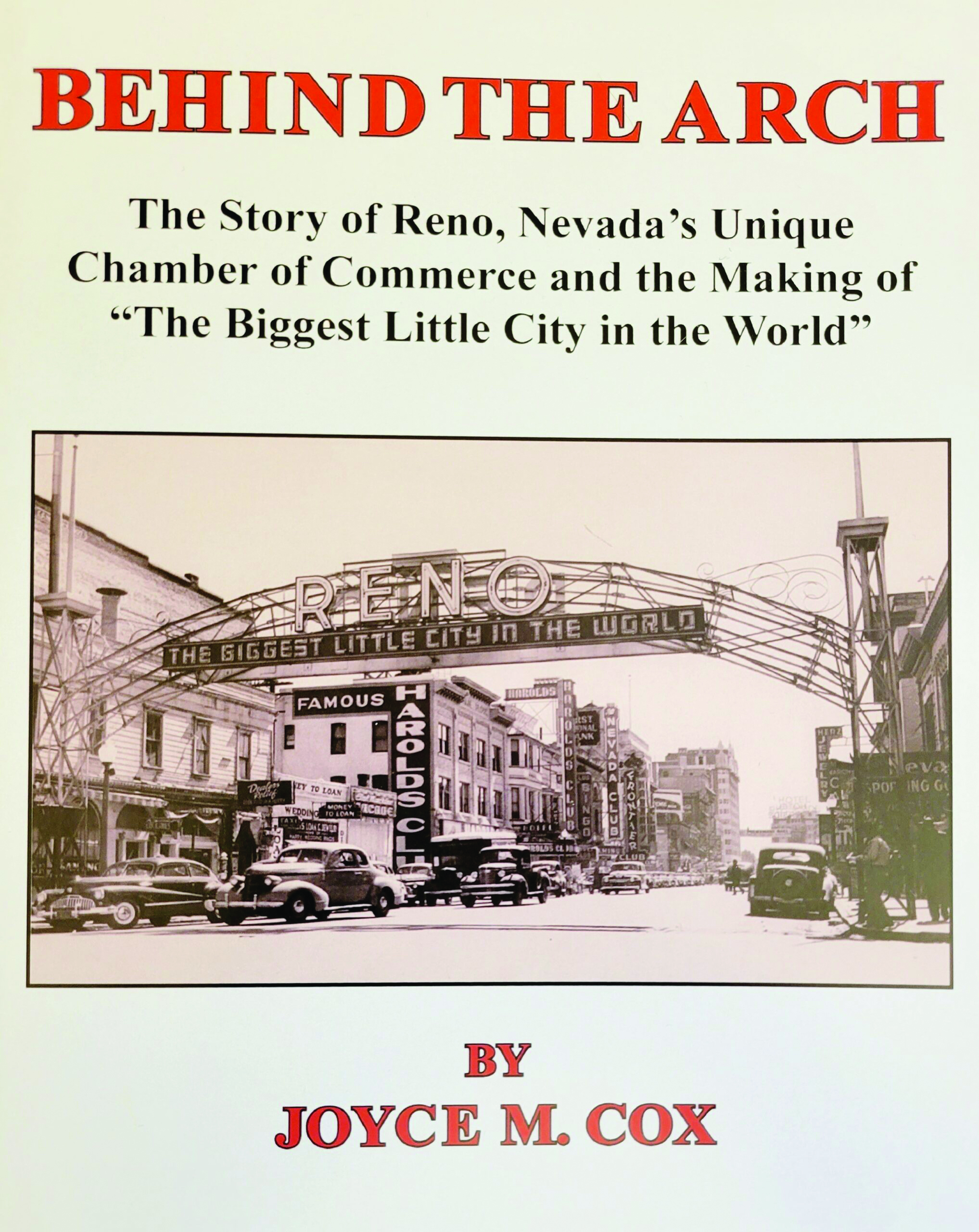Nevada Traveler: Cox’s latest book tells how Reno made a name for itself


Joyce M. Cox’s latest book was titled Behind the Arch: The Story of the Unique Reno, Nevada Chamber of Commerce and the Making of the “Biggest Little City in the World.”
Provided to the LVN
Reno author Joyce M. Cox, who died in May at the age of 75, was once described as “a human version of Google, decades before the Internet existed.”
Her quick response in locating and retrieving information was greatly appreciated by all who came into contact with her during her many years as an academic librarian in California, Washington, and Nevada.
It is this special ability that makes her latest book, “Behind the Arch: The Story of Reno, Nevada’s Unique Chamber of Commerce and the Making of the ‘Biggest Little City in the World’,” such a delight.
Cox, who retired in 2009 after serving as chief librarian of the Nevada State Library and Archives, has studied the history of successfully marketing and promoting the city of Reno over the decades.
The book, published earlier this year by Eric Moody’s Nevada through Reno’s West Publishing, begins with a short chapter describing how the then-fledgling Reno community took its first steps toward self-promotion by forming various promotional committees that eventually evolved into Reno’s first Chamber of Commerce.
Cox tells the story of how the city’s famous slogan, “Reno: The Biggest Little City in the World,” came about and how the community used promotional brochures and magazine articles to promote the community and its many assets.
Along the way, readers learn about the various themes covered in advertising for the city, including its quality of life and recreational opportunities (“Reno Land of Charm”) and the tax advantages of living in Nevada (“One Sound State”).
Later chapters are devoted to the numerous private and public advertising measures related to gambling.
These ranged from the iconic “Harold’s Club or Bust!” signs to the Reno Chamber’s “In Reno It’s Fun Time All the Time” advertisements from the mid-1960s.
The book is richly illustrated with historical photographs and images of various advertising campaigns, including posters, leaflets, cards and brochures.
Of course, the book is fun to read because you can see how Reno’s promotional efforts have evolved over time. Initially, the goal was mainly to encourage people from other states to visit Reno to see that the city is not a remote, uncivilized community.
Later, the effort went through a phase of promoting the city as a tax haven, then as a capital for “quick” divorces, and finally as a center for skiing, special events and rodeos. In the 1960s, Reno promoters built their identity around the gambling industry, then pushed for economic diversification starting in the late 1970s.
In fact, Cox’s book is more than just an account of the city’s advertising campaigns over the decades. It is also a good and well-founded history of the city’s development as a community.
Copies of Joyce M. Cox’s book, “Behind the Arch: The Story of Reno, Nevada’s Unique Chamber of Commerce and the Making of ‘The Biggest Little City in the World,'” are available at the Nevada Historic Society gift shop at 1650 N. Virginia St. in Reno.



